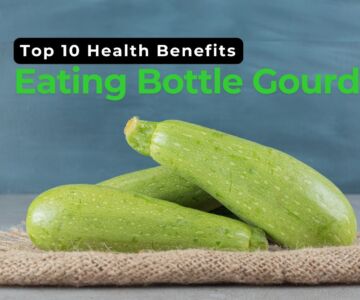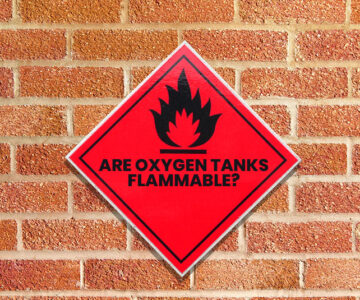 Are Mangoes Good for Diabetics?by admin / September 11, 2021
Are Mangoes Good for Diabetics?by admin / September 11, 2021Is Food Fungus Dangerous?
What are Food Molds?
Molds are said to be microscopic fungi that actually live on plant or animal matter. They tend to grow from tiny spores that float in the air. When these spores fall on damp food, they grow as mold.
Molds feed themselves by producing chemicals that break down the food and eventually start to rot. There are thousands of varieties of molds. For instance, molds that grow on a lemon look like blue-green powder.
It looks like a grayish-white fuzz on a strawberry. A common mold that mostly grows on bread looks like white cotton. After a few days, it may turn black and the tiny black dots are said to be its spores which can produce molds. These molds are filamentous organisms and can be transported by water, air, or insects.
Are Molds Dangerous?
Is mold on food bad for you? Some Molds may cause respiratory problems and allergic reactions. And a few molds tend to produce mycotoxins which are poisonous substances and can make you fall sick.
What are Mycotoxins?
They are said to be poisonous substances that are produced by certain molds found mostly in nut crops and grain but are also known to be on grape juice, apples, celery, and other produce. There are many types of molds and scientists are continually discovering them.
Cheese molds come with an exception! Some cheeses are eaten after they become moldy. For example, blue cheese actually gets its flavor from the veins of the blue-green mold in it. Holes are poked into blue cheese so that air enters these holes and mold grows here as the cheese ripens.
Are Molds Only on the Surface?
No, you only see a part of it on the surface of the food. When food shows mold growth, its root threads would have already invaded into the food deeply.
What Causes Mold on Food?
Molds need 4 things to grow on food: food, water, temperature, and suitable air quality. Food that contains any fluid or water is prone to mold growth. Also, mold only grows if the food is readily available in order to feed itself & grow.
Mold is said to be a fungus that feeds on dying or dead organic matter and can be hazardous to your health. Mold grows in damp, cool, and dark conditions but also they can grow at a warm temperature. They grow best between 55 – 70 degrees Celsius.
Can Mold Grow in the Fridge?
Here we will discuss mold on food in the fridge. Though molds are known to grow in warmer temperatures, they also grow in refrigerator temperatures. They also have the tendency to tolerate sugar and salt better than other food invaders.
So molds can grow on refrigerated jelly and jams and also on salty meats. So how to prevent mold on food in your refrigerator. Cleanliness is very important in controlling mold. Clean the refrigerator where the contaminated food was stored.
Also, clean nearby items because molds tend to spread quickly in vegetables and fruits. Regularly clean the inside of your refrigerator using 1 tablespoon of baking soda mixed in a quart of water. Then rinse with water & dry.
Use plastic bags to store foods which you want to stay moist like cut fruits or vegetables. Transfer perishable foods in an open can to clean storage containers & refrigerate them. Do not leave any perishable food outside refrigerators for more than 2 hours. Always use the leftovers as quickly as possible so that molds do not grow.
How to Handle Moldy Food?
Is food mold dangerous to breathe? Do not sniff the food with mold as it can cause a respiratory problem. Discard the food covered with mold. Dispose of it in plastic and throw it in covered trash so that no animals are harmed by it.
Types of Mold on Food
There are 12 different types of mold which are listed below:
- Acremonium
- Alternaria
- Aspergillus
- Aureobasidium
- Chaetomium
- Cladosporium
- Fusarium
- Mucor
- Penicillin
- Stachybotrys
- Trichoderma
- Ulocladium
Side Effects of Mold Exposure
The side effects of eating mold include allergic reactions, gastrointestinal symptoms, or respiratory problems and it depends on the amount consumed, age & health of the individual.
Some of the health effects of mold exposure are as follows:
1. Mold Sensitivity:
Some people have sensitive mold allergies and the symptoms are chest and nasal congestion, sore throat, coughing, wheezing, sneezing, skin irritation, headaches, watering, sore, or dry eyes.
2. Mold-Related Infections:
People with pre-existing lung conditions like COPD are more vulnerable to mold’s health hazards. They easily tend to develop infections.
3. Respiratory Conditions:
Mold exposure can lead to respiratory conditions in people who already have lung illnesses. It includes symptoms such as shortness of breath, coughing, wheezing, upper respiratory tract problems, etc.
FAQ
1. What happens if you eat food with fungus?
Eating food with fungus may lead to respiratory problems, allergic reactions or gastrointestinal symptoms.
2. How do you get rid of food fungus?
Keep your fridge clean and & remove any spoiled food. Properly store food & use leftovers at the earliest. This way you can prevent mold.
3. Which food molds are dangerous?
Stachybotrys referred to as black mold is dangerous as it can cause symptoms like headaches, diarrhea, flu-like symptoms, severe respiratory damage, memory loss, etc.
4. Can you remove mold from food and still eat it?
No, eating moldy food can lead to illness. So it is better to discard food with mold.



